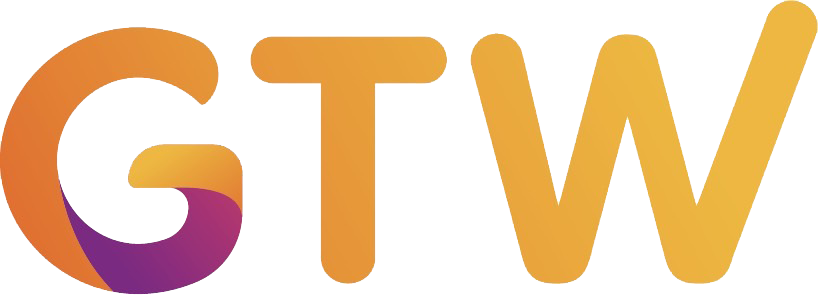
HA NOI–SA PA–HA LONG 4N5D
11 มีนาคม 2568
ผู้ชม 165 ผู้ชม
BACKGROUND OF VIETNAM
Vietnam's early history comprises of periods of occupation by outside forces and eventual power consolidation under Vietnamese dynastic families. Ancient Vietnam was centered on the Red River Valley and was ruled by a succession of Han Chinese emperors until approximately the 10th century. The Ly Dynasty (11th-13th century) ruled the first independent Vietnamese state, which was known as Dai Viet, and established their capital at Thang Long (Hanoi). Under the Tran Dynasty (13th-15th century), Dai Viet forces led by one of Vietnam’s national heroes, TRAN Hang Dao, fought off Mongol invaders in 1279. Following a brief Chinese occupation in the early 1400s, the leader of Vietnamese resistance, LE Thai To, made himself emperor and established the Le Dynasty, which lasted until the late 18th century, although not without decades of political turmoil, civil war, and division. During this period, Dai Viet expanded southward to the Central Highlands and Mekong Delta, reaching the approximate boundaries of modern-day Vietnam by the 1750s. Dai Viet suffered additional civil war and division in the latter half of the 18th century, but was reunited and renamed Vietnam under Emperor NGUYEN Phuc Anh (aka Gia Long) in 1802.
The Nguyen Dynasty would be the last Vietnamese dynasty before the conquest by France, which began in 1858 and was completed by 1884. Vietnam became part of French Indochina in 1887. It declared independence after World War II, but France continued to rule until its 1954 defeat by communist forces under Ho Chi MINH. Under the Geneva Accords of 1954, Vietnam was divided into the communist North and anti-communist South. Fighting erupted between the two governments shortly afterwards with the North supporting communist rebels in the South and eventually committing thousands of combat troops, while the US provided large amounts of economic and military assistance, including combat forces, to the South. The US military presence reached a peak strength of over 500,000 troops in 1968. US forces were withdrawn following a cease-fire agreement in 1973. Two years later, North Vietnamese forces overran the South reuniting the country under communist rule. The conflict, known as the Second Indochina War (1955-1975), devastated the country, spilled over into the neighboring countries of Cambodia and Laos, and is estimated to have resulted in the deaths of up to 3 million Vietnamese civilians and soldiers. Despite the return of peace, for over a decade the country experienced little economic growth because of its diplomatic isolation, its conservative leadership policies, and the persecution and mass exodus of individuals, many of them successful South Vietnamese merchants. However, since the enactment of Vietnam's "doi moi" (renovation) policy in 1986, Vietnamese authorities have committed to increased economic liberalization and enacted structural reforms needed to modernize the economy and to produce more competitive, export-driven industries. Since implementation, the economy has seen strong growth, particularly in agricultural and industrial production, construction, exports, and foreign investment. Increased tourism has also become a key component of economic growth. Nevertheless, the Communist Party maintains tight political and social control of the country, and Vietnam faces considerable challenges including rising income inequality, corruption, inadequate social welfare, and a poor human rights record.
Since withdrawing its military occupation forces from Cambodia in the late 1980s and the end of Soviet aid by 1991, Vietnam has practiced a non-aligned foreign policy that emphasizes friendly ties with all members of the international community. Relatedly, Vietnam adheres to a security doctrine called the "Four Nos" (no alliances, no siding with one country against another, no foreign bases, and no using force in international relations). Despite longstanding tensions with Beijing regarding its expansive claims that overlap with Hanoi's own claimed maritime boundaries in the South China Sea, Vietnam puts a priority on stable relations with China, given its proximity, size, and status as Vietnam's largest trading partner.
HANOI
Is the capital and second-most populous city of Vietnam. As evident by the literal translation of its name – 'inside the river' – portions of Hanoi's border are deliniated by the Red River and the Black River. As a municipality, Hanoi consists of 12 urban districts, 17 rural districts, and 1 district-level town Hanoi has the second-highest gross regional domestic product of all Vietnam provinces and municipalities at 51.4 billion USD, behind Ho Chi Minh City. Hanoi Capital is also ASEAN 8th largest economy after Surabaya.
In the third century BCE, the Co Loa Capital Citadel of Au Lạc was constructed in the area of modern-day Hanoi. Au Lạc then falls under China rule for around a thousand years. In 1010, Vietnamese emperor to established the capital of the imperial Vietnamese nation Dại Viet in modern-day central Hanoi, naming the city Thang Long. It served as the capital of French Indochina from 1902 to 1945. After the August Revolution, the Democratic Republic of Vietnam designated Hanoi as the capital of the newly independent country. In 2008, Ha Tay Province and two other rural districts were annexed into Hanoi, effectively tripling Hanoi's area.
4 NIGHT / 5 DAYS
DAY 1: HANOI - ARRIVAL (-/LUNCH/DINNER)MORNING FIGHT
Arrive at Noi Bai International Airport, meet your driver for an airport transfer. The driving distance is approximately 45 minutes from airport to Ha Noi city. We drive to the historic complex of Ba Dinh, visit Ba Dinh Square, where the late President Ho Chi Minh declared Vietnams Independence on 2 September 1945, Ho Chi Minh Complex: Ho Chi Minh’s Mausoleum, His house (closed on Monday, Friday and from 15 June – 15 Aug) and continue to the One Pillar Pagoda, the must-see monument in Ha Noi – It is an ancient Buddhist pagoda, built in the early 11th century in the reign of King Ly Thai Tong, all construction supported by only one pillar, resembling a Buddhist lotus( if the time permitted ). Lunch at local restaurant. Afternoon, we visit West Lake, Buddhist Tran Quoc Pagoda, One of the oldest pagodas in Vietnam. Then we will take you pass Hoan Kiem Lake, But Tower, Ngoc Son Temple, Te Huc Bridge, Ly Thai To Moutment. Free time shopping tour the Ha Noi Old Quarter, Night Market (Friday to Sunday). Enjoy the performance of the famous Vietnamese traditional art - Water Puppetry Show. Dinner at local restaurant. Overnight at hotel in Ha Noi.
DAY 2: HANOI - SAPA TOUR - CAT CAT (BREAKFAST/LUNCH/DINNER)
Morning : Transfer to Sa Pa is one of the most interesting sightseeing in the north of Vietnam, with the height around 1500 - 1650m above sea level and a land of modest, quietly but hides varies wonderful of natural scenes and Sa Pa is also a nest of hill tribe as: Black H’Mong, Red Dzao, Xa Pho, Tay, Zay…etc. Travel to Sa Pa, people forget everything, just enjoy the fresh air, clouds, sky, romantic scenery, majestic place. Lunch at local restaurant. Visit Cat Cat village, home of Hmong ethnic minority people. The traditional trades of brocade making and silver and bronze smith are still practiced nowadays by villagers after numerous generations of their ancestors. You can see the Hmong women by their looms weaving fabrics. Relax at the food of the stunning waterfall and the vestige of a hydroelectric power station that was constructed by the French style. Overnight at hotel in Sa Pa
DAY 3: SAPA - FANSIPAN - HANOI (BREAKFAST/LUNCH/DINNER)
After breakfast. We transfer to Fansipan Cable car station, Fansipan a mountain in Viet Nam and the hightest in Indochina. At the height of 3,143m, Fansipan has been widely known as the highest mountain in Viet Nam and “the roof of Indochina”. Conquest of Fansipan is dream of many professional climbers as well as adventurous travelers when they come to Viet Nam. On the top of Fansipan, that is really amazing sightseeing to discovery the felling on highest mountain, take photo, enjoy seeing view ….. Transfer back to Sa Pa by cable car. Lunch at local restaurant. Afternoon:. Transfer back to Ha Noi. Dinner at local restaurant and Overnight at hotel in Ha Noi
DAY 4 : HANOI - HALONG TOUR (BREAKFAST/LUNCH/DINNER)
Morning: Transfer to Ha Long Bay which is about 160 km or 3.5 hour drive away. Moving through the countryside on the way will bring you a clear perspective of a country’s whose 80% of population live on farming. Have a quick rest stop en route before reaching Ha Long City. You will board the wooden junk to visit Ha Long Bay: Visit Thien Cung Caves, Dog Island, Ga Choi, Sail Islands…. The seafood lunch is on board. Finish 04 hour cruise, we will disembark on the land. Drive back to Ha Noi. Check in hotel and relax. Dinner at local restaurant and Overnight at hotel in Ha Noi
DAY 5: HA NOI - DEPARTURE (BREAKFAST) MORNING FIGHT
Free time for shopping or discovery the daily life of the local people. Transfer to Ha Noi/ Noi Bai International Airport and take flight to sweet home. End Tour
PACKAGE INCLUDES:
• All private transfers: airport-hotel-airport and excursion transfers with English speaking guide
• Full board with Vietnamese or Chinese food
• Sa Pa trekking tour, Ha Noi, Ha Long, Water Puppetry Show, sightseeing fee
• Bottle of water available on coach ( 1 bottle per pax per day )
• Foc base on Twin, Double or Triple sharing
• Private 04 hours cruise on Ha Long Bay
TOUR POLICY & NOTES :
• Infant below 2 years old sharing same room with parents is charged for 10%.
• Child below 6 yrs. old without extra bed and sharing same room with parents is charged for 50%.
• Child below 6 yrs. old sharing same room with 1 Adult is charged for 85%
• Child below 11 yrs. old No extra bed & sharing same room with parents is charged for 75%
• Child below 11 yrs. old with extra bed & sharing same room with parents (Triple room) is charged same as adult
• Child below 11 yrs. old sharing same room with 1 Adult is charged same as adult
NOTES:
• What to bring: Original passport, swimming suites, sun glasses, insect repellent
• Special requests on food (diet, halal or vegetarian food) to be advised before departure
• If entrance fees, petrol for cars, boats…change new price in the future. We will inform you late
• The itinerary may be subject to change due to the bad weather condition
• Surcharge weekend in Sa Pa is from Friday to Sunday
PACKAGES IS NOT APPLIED FOR THE PERIOD AS – SURCHARGE TO BE ADVISED UPON REQUEST.
• Lunar New Year : 02 Feb Jan – 24 Feb 2024
• Reunification Day & Labor Day : 29 Apr 2024 – 02 May 2024
• National Independence Day : 31 Aug 2024 - 03 Sep 2024
• Christmas - New Year : 24 Dec 2024 - 05 Jan 2025
PACKAGE EXCLUDES:
• Personal expenses such as drinks at meals, travel insurance, insurance for cover payment for covid - 19 treatment, upgraded meals
• International and Domestic Air tickets, Visa, Bank transfer fees and other not mentioned as the above
• Halal food and Indonesia, Chinese… speaking guide
 สอบถามข้อมูลเพิ่มเติม
สอบถามข้อมูลเพิ่มเติม  Call center
Call center 
 TH
TH  English
English



